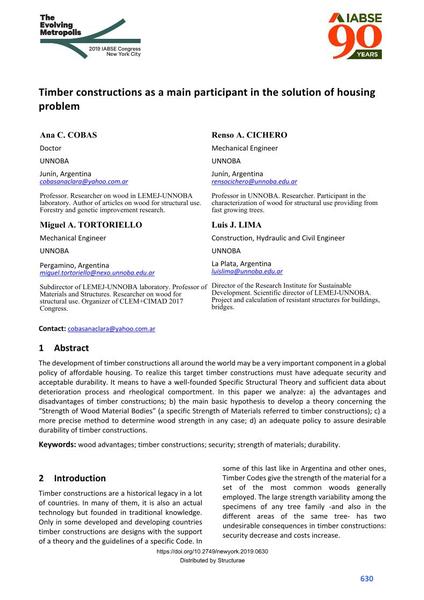Timber constructions as a main participant in the solution of housing problem

|
|
|||||||||||
Détails bibliographiques
| Auteur(s): |
Ana C. Cobas
(UNNOBA)
Renso A. Cichero (UNNOBA) Miguel A. Tortoriello (UNNOBA) Luis J. Lima (UNNOBA) |
||||
|---|---|---|---|---|---|
| Médium: | papier de conférence | ||||
| Langue(s): | anglais | ||||
| Conférence: | IABSE Congress: The Evolving Metropolis, New York, NY, USA, 4-6 September 2019 | ||||
| Publié dans: | The Evolving Metropolis | ||||
|
|||||
| Page(s): | 630-633 | ||||
| Nombre total de pages (du PDF): | 4 | ||||
| DOI: | 10.2749/newyork.2019.0630 | ||||
| Abstrait: |
The development of timber constructions all around the world may be a very important component in a global policy of affordable housing. To realize this target timber constructions must have adequate security and acceptable durability. It means to have a well-founded Specific Structural Theory and sufficient data about deterioration process and rheological comportment. In this paper we analyze: a) the advantages and disadvantages of timber constructions; b) the main basic hypothesis to develop a theory concerning the “Strength of Wood Material Bodies” (a specific Strength of Materials referred to timber constructions); c) a more precise method to determine wood strength in any case; d) an adequate policy to assure desirable durability of timber constructions. |
||||
